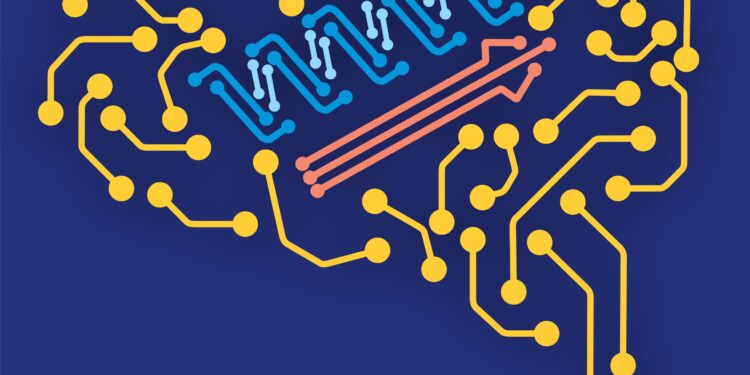A stylized representation of the intersection of artificial intelligence and molecular biology. The image depicts neural circuits intertwined with molecular structures, symbolizing the integration of AI-driven computational tools to map protein interactions in cancer research. The central blue pattern represents a protein binding interaction, emphasizing the focus on precision cancer therapies. Credit: Rafael C. Bernardi – Auburn University
Researchers from Auburn University, in collaboration with scientists from the University of Basel and ETH Zurich, have made a breakthrough in the fight against cancer. The team, led by Dr. Rafael Bernardi, associate professor of biophysics in the Department of Physics, developed a novel approach that integrates artificial intelligence (AI) with molecular dynamics simulations and network analysis to improve the prediction of binding sites on the PD-L1 protein. This breakthrough promises to accelerate the development of personalized cancer treatments by identifying critical interaction points in cancer-related proteins.
Their work, published in the Journal of the American Chemical Society, The research team is interested in how therapeutic proteins interact with PD-L1, a protein known to help cancer cells evade detection by the immune system. Their findings could help improve immunotherapies, such as pembrolizumab (Keytruda), which are already revolutionizing cancer treatment.
“Using computational tools to design proteins represents the next frontier in cancer therapeutics,” said Dr. Bernardi. “Our integrated approach combining AI, molecular dynamics and network analysis holds immense potential for developing personalized therapies for cancer patients.”
Mapping the future of cancer treatment
One of the biggest challenges in cancer therapy is accurately predicting where a drug might bind to its target protein. In this case, researchers focused on PD-L1, a checkpoint protein that cancers exploit to suppress the immune system. By blocking PD-L1, some modern drugs free up the immune system to attack tumors. However, understanding where exactly to target PD-L1 with new treatments has been a long-standing problem.
Dr. Bernardi and his team developed a sophisticated method that combines AlphaFold2-based AI tools with molecular dynamics simulations and dynamic network analysis. Their approach allowed them to predict and confirm key binding regions of the PD-L1 protein that are critical for drug interaction.
“This work highlights the importance of collaboration between the Auburn University computing team and the experimental validation efforts of our colleagues at the University of Basel and ETH Zurich in Switzerland, which are enabling advances in the field,” said Dr. Diego Gomes, lead author of the work and a researcher at Auburn.
The computational approach was validated using state-of-the-art experimental techniques, including cross-linked mass spectrometry and next-generation sequencing. These experiments confirmed the accuracy of the team’s predictions, demonstrating the power of combining computational models and experimental validation to unravel complex protein interactions.
Impact and future directions
The implications of this study extend far beyond PD-L1. The methods developed can be applied to many other proteins, potentially leading to the discovery of new therapeutic targets for a variety of diseases, including other types of cancer and autoimmune diseases. In addition, this research paves the way for more cost-effective and rapid development of therapies, an area where traditional experimental methods can be slow and expensive.
“This research highlights the potential of computational tools such as NAMD and VMD, combined with cutting-edge hardware like NVIDIA DGX systems, to advance cancer therapies. Our results mark an important step toward the development of new targeted cancer treatments,” Gomes added.
More information:
Diego EB Gomes et al, Integration of dynamic network analysis with AI for better epitope prediction in PD-L1:Affibody interactions, Journal of the American Chemical Society (2024). DOI: 10.1021/jacs.4c05869
Provided by Auburn University
Quote:AI meets biophysics: New approach identifies critical interaction points in cancer-related proteins (2024, September 5) retrieved September 6, 2024 from
This document is subject to copyright. Apart from any fair dealing for the purpose of private study or research, no part may be reproduced without written permission. The content is provided for informational purposes only.



